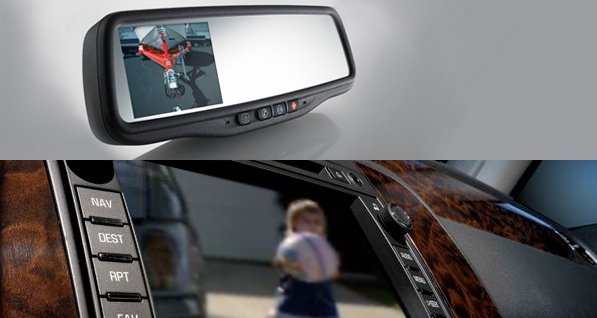NHTSA proposes obligatory backup cameras in all new cars

The National Highway Traffic Safety Administration, which issued the proposed rule at Friday, December 3, said an average of 292 people die each year from back-over accidents, which primarily kill children and the elderly. NHTSA estimated about 18,000 people a year are hurt in back-over accidents, with about 3,000 suffering “incapacitating” injuries. The agency said 44 percent of the incidents involve children under age 5.
To 16.6 million auto produced in a year would cost from $1.9 billion to $2.7 billion, the agency said in the proposition. It called the cost “substantial,” but said the measure might decrease back-over deaths and injuries by almost half. “There is no more tragic accident than for a parent or caregiver to back out of a garage or driveway and kill or injure an undetected child playing behind the vehicle,” Transportation Secretary Ray LaHood said in a statement. “The changes we are proposing today will help drivers see into those blind zones directly behind vehicles to make sure it is safe to back up.”
Following the announcement, Ford said today it will have rear-view cameras available in almost all Ford and Lincoln models by the end of 2011.
David Leiker, an analyst with Baird Equity Research said that the rule will benefit suppliers such as Gentex Corp. He supposed in a research note that Gentex's rear-camera display system, with an LCD screen that is visible when the vehicle is in reverse, would satisfy NHTSA's proposed requirements.
The Alliance of Automobile Manufacturers and the Association of International Automobile Manufacturers, whose members include U.S. and non-U.S.-based carmakers, said they are reviewing the rule.
“AIAM supports the establishment of performance-based requirements that provide maximum flexibility to manufacturers in selecting approaches to meet enhanced rear visibility requirements,” Annemarie Pender, a spokeswoman for the Washington-based international group, said in an e-mail. “Our members invest billions of dollars into saving lives by researching, creating and deploying advanced safety features on their vehicles.”
“Given that our top priority is keeping people, especially children, safe in and around autos, the Alliance looks forward to working with regulators to ensure that, in the end, we have enhancements that saves lives and improve safety,” Wade Newton, a spokesman for the Washington-based alliance, said in an e- mail.
The regulator doesn't specify which kind of technology must be used, while saying in the proposed rule that “the most effective technology option” it evaluated is the rearview video system, which is also the most high-priced. In auto without a visual-display screen, rearview video systems cost customers $159 to $203. For a car with a video screen, such as those used in navigation systems, adding a camera would cost $58 to $88, NHTSA said.
U.S. auto-safety regulators said it will accept comments on the suggested rule for 60 days and it will publish a final rule by Feb. 28. After that, to meet the requirements of the proposed rule, 10 percent of new vehicles must comply by September 2012, 40 percent by September 2013 and 100 percent by September 2014, NHTSA said.
Nouvelles connexes


